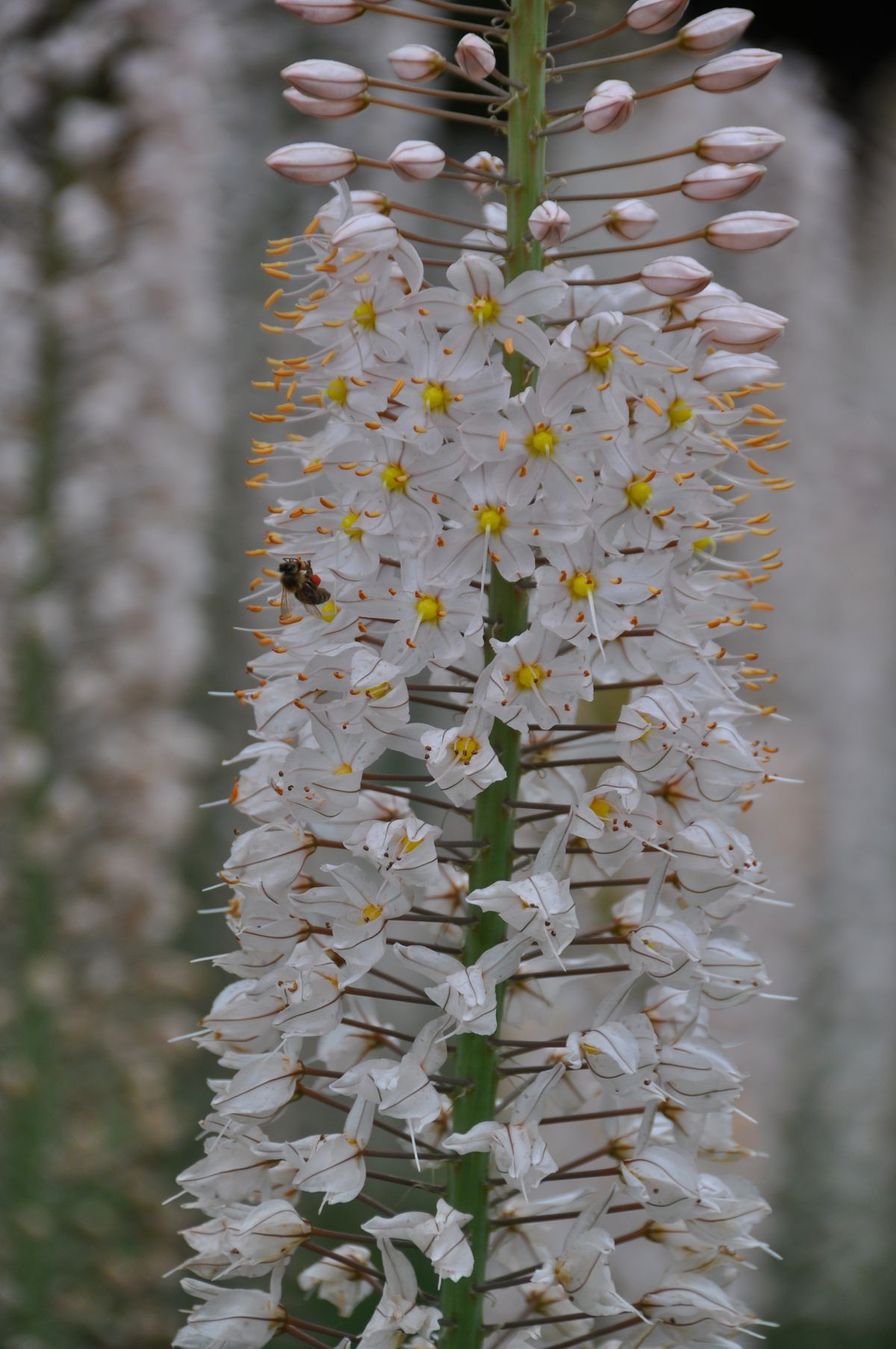Gardening: Foxtail lilies — tall beauties — found in Glenrose field

Carolyn Payne lives in the Glenrose Prairie area of Spokane and regularly drives on 29th Avenue near its intersection with Glenrose Road. She recently dropped me a note about an amazing stand of 7- to 8-foot-tall foxtail lilies growing in a field along the road.
With the landowners’ information I was off to see this horticultural treat before they faded away. Turns out not only were the plants beautiful, they came with a good story.
But first a little background on foxtail lilies or desert candles. Known technically as Eremurus, they are native to the arid grasslands of Afghanistan and Iran. The flower looks like a candle or a fox’s tail, hence its common names. The fragrant flower can grow 6-8 feet tall in shades of copper, bright yellow, snow white, pastel pink and orange. Made up of many smaller flowers, the flowers draw in droves of pollinators. The leaves are strap-like and grow in clumps. The planting that Payne saw covers the better part of an acre.
“They used to cover the whole field,” said Elaine Staak. She and her husband Vern have lived on the property for decades. Her parents built the house in 1937, and Elaine grew up there. And this is where the story behind the Eremurus begins.
Her father was friends with John W. Duncan, Spokane Parks Superintendent, Staak said.
Duncan was wrapping up his career creating places like Manito Park, Duncan Gardens and a host of other parks. Duncan had a private garden not far from Staak’s parents’ farm close to the current Spokane Racquet Club.
“I was little,” Staak said. “But I remember my dad bringing home the plants in 1942 or ’43 and helping him plant them in the field.” Staak added that they used to cut them for local florists, and she still takes them to church.
“We had to buy some extra-large vases to hold them upright,” she said.
Growing Eremurus is not difficult if they are planted in well-drained soil. They are hardy to USDA Zone 5 and are deer and rodent resistant. They usually are planted in the fall but can be planted in the spring . The roots look like an octopus with arms emanating from a pointed crown. The roots are very fragile and must be handled carefully. The best selection will be found online.
To plant them, first soak the roots in water for three to four hours and then plant immediately. They do better in a sandy or rocky soil in full sun. Dig a flat, deep hole a little wider than the roots. Create a mound in the center and set the crown on it. Gently backfill the hole with dirt so the tip of the crown is just below the soil. Water regularly the first year after which they are fairly drought tolerant. Cut the flower stalk off after it finishes and leave the plant to collect energy. It will go dormant later in the summer like daffodils do.